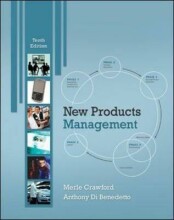Summary: Asset Pricing
- This + 400k other summaries
- A unique study and practice tool
- Never study anything twice again
- Get the grades you hope for
- 100% sure, 100% understanding
Read the summary and the most important questions on Asset Pricing
-
1 Week 1: The Basics
This is a preview. There are 1 more flashcards available for chapter 1
Show more cards here -
1.1 Portfolio Theory
This is a preview. There are 1 more flashcards available for chapter 1.1
Show more cards here -
Modern Portfolio Theory (MPT)
- Given expected returns, risks, and correlations:- MPT maximizes expected return given a certain level of risk
- OR
- MPT minimizes risk given a certain level of expected return
- Focus on the optimal combination of assets- Diversification
- Irrespective of the investor's utility function
-
How to form expected returns out of historical returns?
Assume that historical average risk and returns are representative for the future. -
1.2 Utility Functions
This is a preview. There are 2 more flashcards available for chapter 1.2
Show more cards here -
Von Neuman Morgenstern Expected Utility:
Decision-maker faced with risky outcomes of different choices will behave as if he is maximizing the expected value of some function defined over the potential outcomes --> so, probability-weighted average of utility over the possible outcomes -
Explain the formula: U[W] = aW - b/2V[W] = aW - b/2W^2
- U[W] describes my utility (happiness) over my wealth
- aW (with a > 0) describes that if I get more wealth, my happiness goes up.
- -b/2V[W] means that higher risk makes me less happy.
- b is the risk aversion factor. The higher b, the heavier the risk factor is taken into account
- First derivative: a - bW > 0, more wealth makes me more happy
- Second derivative: -b < 0: the extra wealth makes me less additionally happy
- U[W] describes my utility (happiness) over my wealth
-
What can we say about the utility function?
- If you invest in riskier assets (i.e., the w+ and w- are further apart, there is a bigger discount in utility)
- The difference in the utility function and actgual utility is the risk premium
-
What can we conclude about utility wrt the demand for the market portfolio?
- Increases with expected return
- Decreases with risk-free rate
- Decreases with risk
- Decreases with risk aversion
- Decreases with wealth (?) -> no, other way around
- Increases with expected return
-
1.3 CAPM
This is a preview. There are 2 more flashcards available for chapter 1.3
Show more cards here -
What is the empirical translation of the CAPM?
Alpha should equal the risk free rate! -
1.4 Fama-MacBeth methodology
This is a preview. There are 3 more flashcards available for chapter 1.4
Show more cards here -
What are the three testable implications based on the CAPM equation?
- The relation between expected
return andrisk islinear Beta is a completemeasure ofrisk ofsecurity i inportfolio m (beta is the only variable that predicts risk, any other measure should not have any predictive power)Higher risk should beassociated with higher expectedreturns
- The relation between expected
-
What are the assumptions in the CAPM model?
- Markets are efficient, so prices full reflect available information
- Investors are risk averse
-
Why is it difficult to estimate true beta?
- For
out-of -sample testing (expectedreturns ), need toestimate beta on apre-testing period. - Assume:
- Beta stays constant for next period
Rational expectations : E(r) = r- Trade off between stability and length of sample period -> remains arbitrary choice (to lengthy mihgt not be relevant anymore)
- Error in variables problem: estimated gamma is biased downwards
- For
- Higher grades + faster learning
- Never study anything twice
- 100% sure, 100% understanding
Topics related to Summary: Asset Pricing
-
Factor Models - Fama-French three factor model
-
Factor Models - Fama-French five factor model
-
Factor Models - Momentum
-
Factor Models - Risk or characteristics?
-
Behavioral Finance - Limits to arbitrage
-
Behavioral Finance - Limits to arbitrage; noise trader risk
-
Behavioral Finance - How can we measure noise trader risk, and can we use it as an investor?
-
Market Frictions - High frequency trading
-
Market Frictions - Market liquidity as a priced risk factor
-
Market Frictions continued (short selling) - What do short sale bans do to market quality?
-
Market Frictions continued (short selling) - How do sale constraint affect the CAPM






























